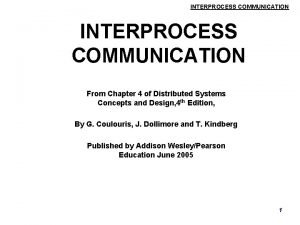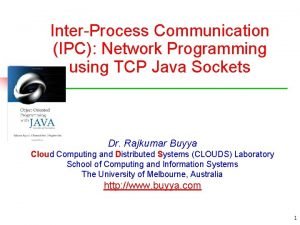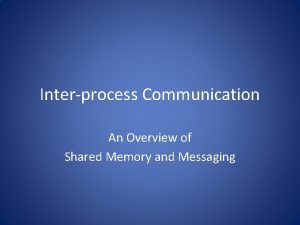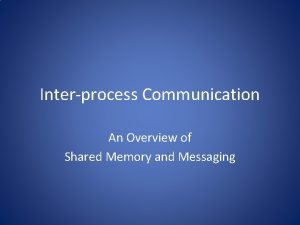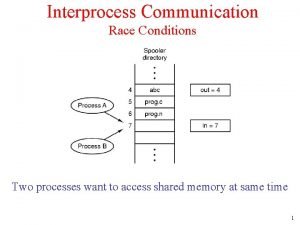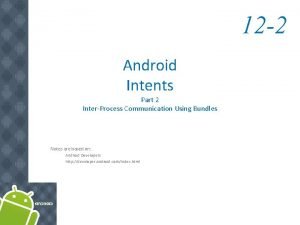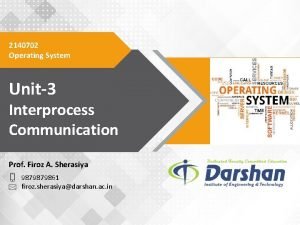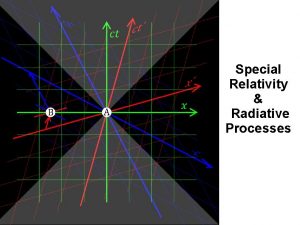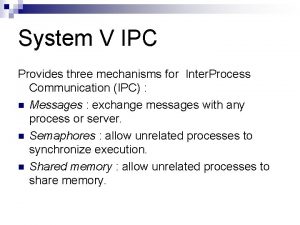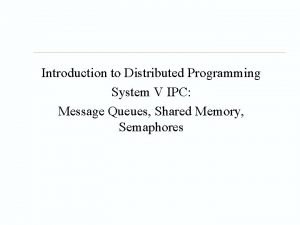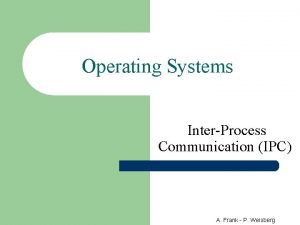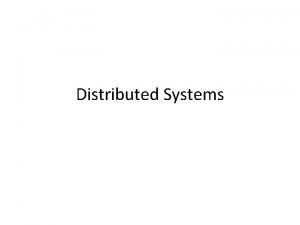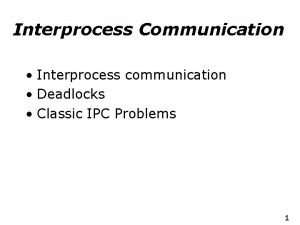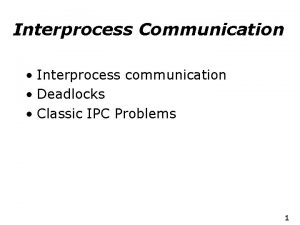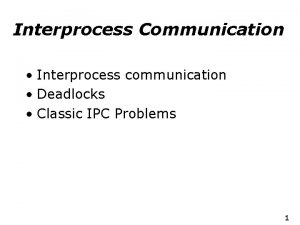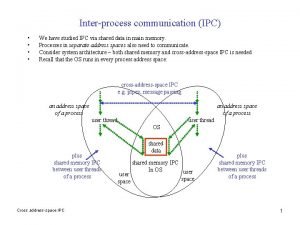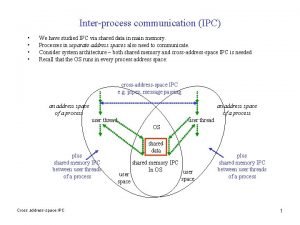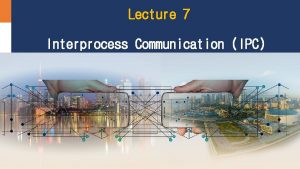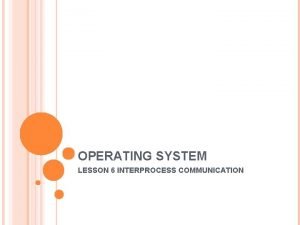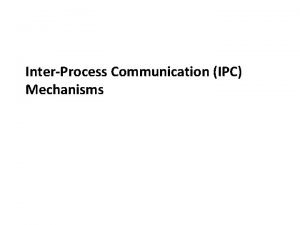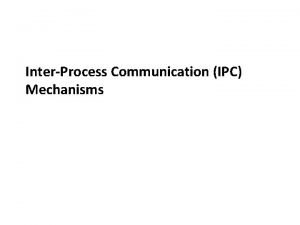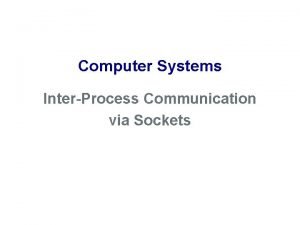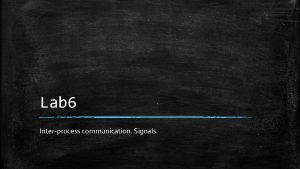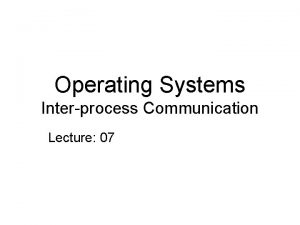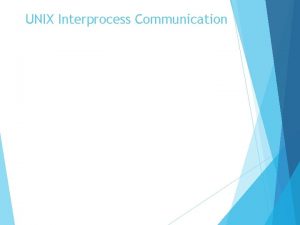Todays topics System V Interprocess communication IPC mechanisms




















- Slides: 20

Today’s topics • System V Interprocess communication (IPC) mechanisms –Message Queues –Semaphores –Shared Memory • Summary of processes related concepts COP 5570 – Advanced Unix Programming Florida State University

Why other IPC mechanisms • File: slow • Pipes/sockets • FIFO semantics • Signals: sending flags (small) • Sometimes, we want something beyond FIFO • FIFO with tags (message queue) • File semantics using memory: the content is always there unless it is modified explicitly. (shared memory) • Once concurrency is allowed in shared data, we will need a way to protect (lock) the data. (semaphore) • Notice that all of these mechanisms are more or less difficult to accomplish. Why? • It is by design! COP 5570 – Advanced Unix Programming Florida State University

Message queues • What are they? – Similar to the FIFO pipes, except that a tag (type) is matched when reading/writing. • Allowing cutting in line (I am only interested in a particular type of message) • Equivalent to merging of multiple FIFO pipes in one. COP 5570 – Advanced Unix Programming Florida State University

Message queues • Creating a message queue and getting a message queue id: – int msgget(key_t key, int msgflag); – Key can be any large number. But to avoiding using conflicting keys in different programs, use ftok() (the key master). • key_t ftok(const char *path, int id); – Path point to a file that the process can stat – id: project ID, only the last 8 bits are used COP 5570 – Advanced Unix Programming Florida State University

• Message queue. – A linked list of messages stored within the kernel and identified by a message queue identifier. – Different processes can use the same key to post and retrieve messages • Every message has a type field, and a nonnegative length, and the actual data bytes. • Msgsnd puts a message at the end of the queue • Msgrcv gets a message, may not follow FIFO order (can be based on type) • Has resource limits: MSGMAX, MSGMNB, etc COP 5570 – Advanced Unix Programming Florida State University

• Message queue operations int msgget(key_t key, int flag) int msgctl(int msgid, int cmd, struct msgid_ds *buf) int msgsnd(int msgid, const void *ptr, size nbytes, int flag); int msgrcv(int msgid, void *ptr, size_t nbytes, long type, int flag); • Used to have performance advantage over pipe: – no longer true for newer systems COP 5570 – Advanced Unix Programming Florida State University

Shared Memory Common chunk of read/write memory among processes MAX ptr Create Shared Memory (unique key) Attach 0 Attach Proc. 1 ptr ptr Proc. 3 Proc. 4 Proc. 5 COP 5570 – Advanced Unix Programming ptr Proc. 2 Florida State University

Creating Shared Memory and getting shared memory id int shmget(key_t key, size_t size, int shmflg); Example: key_t key; int shmid; key = ftok(“<somefile>", ‘A'); shmid = shmget(key, 1024, 0644 | IPC_CREAT); • Here’s an example: shm_create. c. • The share memory is permanent once created. It must be explicitly removed! COP 5570 – Advanced Unix Programming Florida State University

Attach and Detach Shared Memory void *shmat(int shmid, void *shmaddr, int shmflg); int shmdt(void *shmaddr); Example: key_t key; int shmid; char *data; key = ftok("<somefile>", ‘A'); shmid = shmget(key, 1024, 0644); data = shmat(shmid, (void *)0, 0); shmdt(data); COP 5570 – Advanced Unix Programming Here’s an shm_attach. c Florida State University

Deleting Shared Memory int shmctl(int shmid, int cmd, struct shmid_ds *buf); shmctl(shmid, IPC_RMID, NULL); Example: Shm_delete. c COP 5570 – Advanced Unix Programming Florida State University

Command-line IPC control • ipcs – Lists all IPC objects owned by the user • ipcrm – Removes specific IPC object COP 5570 – Advanced Unix Programming Florida State University

Semaphores • Managing concurrent access to shared memory segment. • Using Semaphores – Creation: semget( … ) – Incr/Decr/Test-and-set : semop(…) – Deletion: semctl(semid, 0, IPC_RMID, 0); COP 5570 – Advanced Unix Programming Florida State University

• Process environment – Command line arguments: argc, argv – environ and getenv() – getpid(), getuid(), getppid() – How does a program access the second (command line) argument? – How does a process access the variable you set in shell using commands such as “setenv TERM vt 100”? – How does a process know its parent’s process id? How does a parent know its children’s process ids? Florida State University

• Process management – fork, exit, waitpid, execv – How can a parent process know whether its child has executed successfully? – How to determine whether execv runs a command successfully? Florida State University

• File operations: – What are the related data structures for file operations? – open, close, read write, unlink, dup. – How to redirect the standard input/output/error? Florida State University

• Inter-process communication: – File – Pipe – What kind of processes can communicate with pipes? – How to implement “ps | grep xyuan | more”? – Message queue – Shared memory – semaphore Florida State University

• Inter-process communication: – Signal – What is the typical default action for a signal? – Blocking/unblocking a signal • sigset manipulation – sigfillset, sigemptyset, sigaddset, sigdelset, sigismember • the sigprocmask system call – Install signal handler (can ignore a signal or use default handler) • signal • sigaction – Sending signal: kill, alarm Florida State University

• Terminal I/O – canonical mode – noncanonical mode • tcgetattr, tcsetattr • termios data structure Florida State University

• Process group/session/control terminal – Related to job control • Who gets to access the keyboard? Who to send signal generated from the keyboard. – Foreground and background processes – Joining a group or creating a group: setpgid – Making a group foreground or background • tcgetpgrp/tcsetpgrp Florida State University

Realizing shell/make commands • • • IO redirection Pipes Background execution “arrow” functions ‘cd’ command – Why is this command different from other commands? • PATH environment variable. COP 5570 – Advanced Unix Programming Florida State University
 What is multicast communication in distributed system
What is multicast communication in distributed system Interprocess communication in linux
Interprocess communication in linux Interprocess communication in java
Interprocess communication in java Message passing os
Message passing os Interprocess communication in os
Interprocess communication in os Race condition in interprocess communication
Race condition in interprocess communication Android interprocess communication
Android interprocess communication Reader writer problem
Reader writer problem Indeed
Indeed System v ipc
System v ipc System v ipc
System v ipc Ipc operating system
Ipc operating system What is ipc in distributed system
What is ipc in distributed system Wireless communication research topics
Wireless communication research topics Organizational communication topics
Organizational communication topics Individulist
Individulist Todays generations
Todays generations In todays lesson
In todays lesson Todays with apostrophe
Todays with apostrophe Todays worldld
Todays worldld Whats thermal energy
Whats thermal energy
